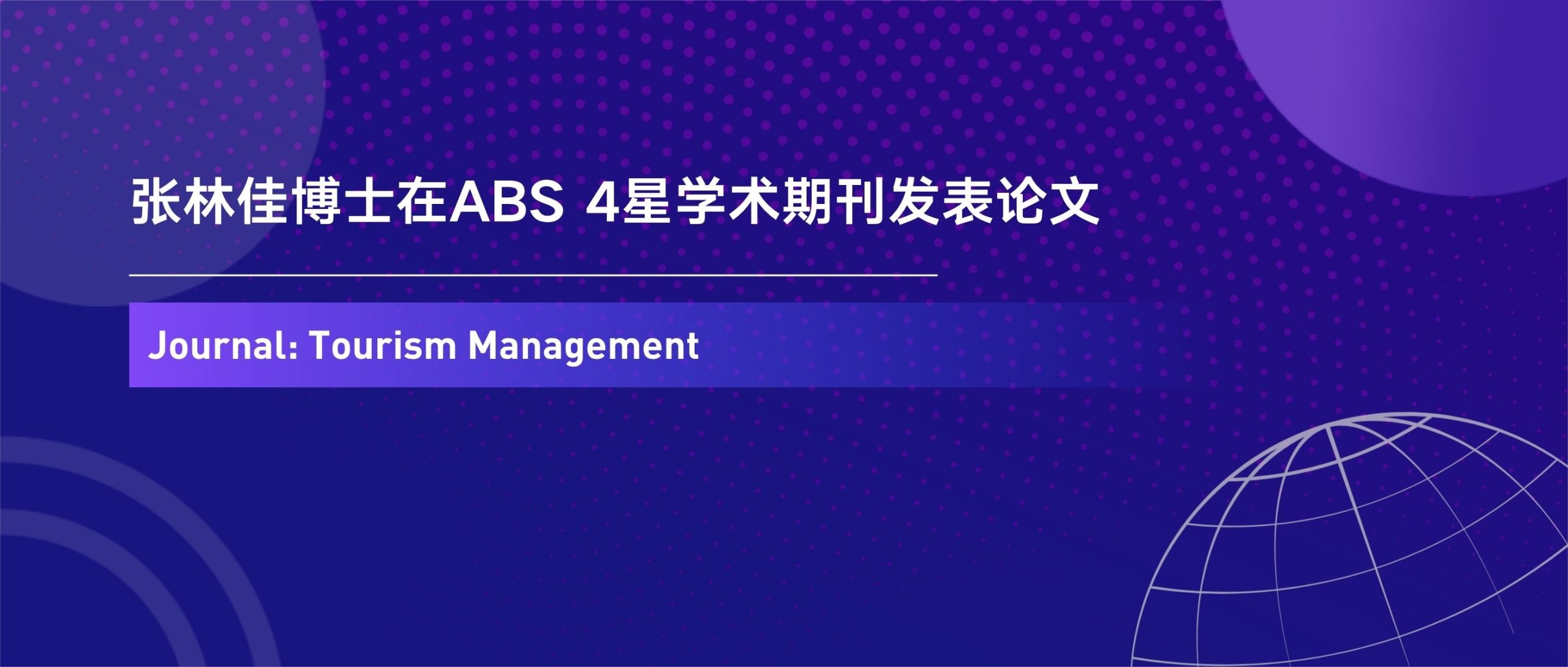30 Oct 2025
If you follow financial markets, you’ve seen it: two companies in the same industry, facing the same economy, can deliver wildly different returns. Tourism is no different. Two hotel groups under the same regulations, or two provinces with similar resources, often end up with very different performance. For business leaders and policymakers, the real question is simple: is the gap due to internal management, or the technology and infrastructure around them?

Dr Linjia Zhang, Associate Professor of Economics at the International Business School Suzhou (IBSS) at Xi’an Jiaotong-Liverpool University, has published his latest study, “Measuring Performance Variability: A Meta-Heterogeneity Index Approach in Tourism Research”, in Tourism Management (Impact Factor: 12.4), the world’s leading journal in tourism and hospitality management. This is Dr Zhang’s third Tourism Management paper focused on performance measurement and competitiveness analysis in the tourism sector.
From Theory to Practice: A New Way to Measure Tourism Competitiveness
Tourism is a complex and diverse industry, where destinations or firms operating under similar standards often perform very differently. Understanding why some regions progress while others lag behind is critical for both business strategy and public policy. Traditional efficiency tools, such as the Malmquist Index, compare overall productivity trends but often fail to explain variations within groups — for instance, why two similar provinces or hotel chains respond differently to the same policy or market condition.
To address this gap, Dr Zhang and his co-authors developed the Meta-Heterogeneity Index (MHI) — a new analytical framework built upon Data Envelopment Analysis (DEA). The MHI evaluates each destination or firm not only against the national frontier but also relative to its regional benchmark, providing a clear diagnosis of how much of the performance gap stems from operational efficiency versus technological progress.
Unlike conventional measures, the MHI decomposes productivity change into two components:
- Meta Efficiency Change (MPEC) – capturing whether an entity is managing its resources more effectively than its peers;
- Meta Technical Change (MPTC) – identifying whether the underlying production technology in a region has advanced or stagnated.
This dual decomposition allows both policymakers and managers to pinpoint whether underperformance is due to internal inefficiency, external technological lag, or resource misallocation.
Empirical Insights and Industry Relevance
Using a comprehensive dataset of China’s star-rated hotels, the study reveals that within-region differences often outweigh the commonly cited East–Central–West gap. These findings highlight that regional tourism strategies should differentiate between efficiency and innovation policies. For example, mature markets may need technological upgrading and digital transformation, while emerging regions may benefit more from managerial training and operational restructuring.
Contribution and Broader Impact
The MHI offers an evidence-based diagnostic tool for destination management organizations (DMOs), tourism boards, and hospitality firms to design targeted interventions rather than relying on one-size-fits-all policies. By identifying the specific sources of performance gaps, decision-makers can better prioritize investments, improve policy efficiency, and foster balanced and sustainable tourism development.
This study continues Dr Zhang’s long-standing research on efficiency measurement and tourism economics, providing a bridge between advanced quantitative modeling and real-world applications in tourism management and regional policy planning.
About the Author
Dr Linjia Zhang is Associate Professor of Economics and Programme Director of MSc Business Analytics at IBSS, and Co-Leader for the Urban and Culture Group at the CCCS Research Center, Xi’an Jiaotong-Liverpool University. His research interests concentrate on theoretical and empirical studies concerning tourism economics, productivity and efficiency measurements, and destination management. He has published several papers in top international journals as the first author and corresponding author, such as Tourism Management (ABS4, ABDC: A*), Journal of Travel Research (ABS4, ABDC: A*), Tourism Economics (ABS2, ABDC: A), Current Issues in Tourism (ABS2, ABDC: A), Economic Modelling (ABS2, ABDC: A), Journal of Hospitality Tourism Research (ABS2, ABDC: A), Annals of Regional Science (ABS2, ABDC: A), etc., co-authored one monograph, hosted and participated several national and international research project. He is also acting on the editorial board of Tourism Economics, and Journal of Global Information Management.
About the Journal
Tourism Management (Impact Factor 12.4) is the top-ranked global journal in tourism and hospitality management, listed as an ABS 4, JCR Q1, ABDC A*, and FMS A-list journal. It is recognized by the Chinese Academy of Sciences as a Zone 1 (Top-tier) publication. Known for its high standards and selectivity, Tourism Management accepts only around 6% of submitted manuscripts each year. The journal is widely regarded as the most influential platform for cutting-edge research shaping the future of the tourism and hospitality industries.
30 Oct 2025







